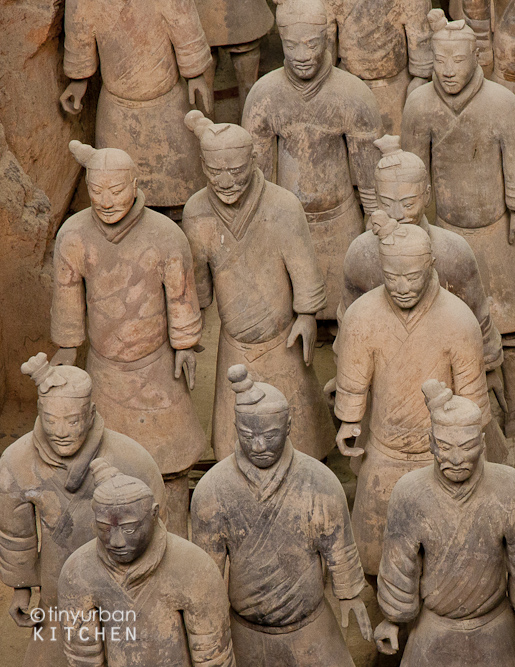
For thousands of years, the Chinese knew the legend of Qin Shihuang, the first emperor of China. Emperor Qin ascended to the throne at the young age of 13. Obsessed with wanting to live forever, he began constructing his tomb soon afterwards. Qin wanted to be surrounded by the largest and strongest army possible in afterlife. According to Sima Qian, a well known historian who lived about a century after Emperor Qin (circa 100 B.C.), it took nearly 700,000 men over three decades to build this massive army.
Chinese children grew up hearing stories about a magnificent tomb buried underground filled with thousands of life-sized terra cotta soldiers, precious jewels, and magical rivers.
Imagine the shock and awe when, in 1974, a poor farmer hit upon this tomb while digging for water. For the first time in history, the legend had been validated.
The army was real and incredibly well preserved.
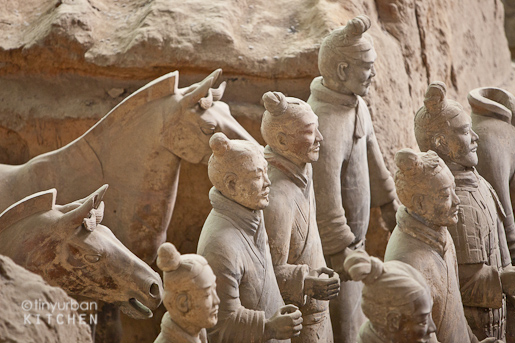
How could such a tomb be so well preserved?
Legend has it that Emperor Qin buried alive everyone that worked on the tomb in order to keep its location secret forever. He was obsessed with living forever. Ironically, he died from drinking a magical "elixir" that was supposed to help him live forever. The elixir was mercury.
Soon after Emperor Qin's death, tomb robbers raided the site, setting it on fire. By some crazy stroke of luck, the ashes and the dirt fell on the soldiers, protecting them from the elements (e.g., oxygen, sunlight) for thousands of years, keeping them nearly perfectly preserved.
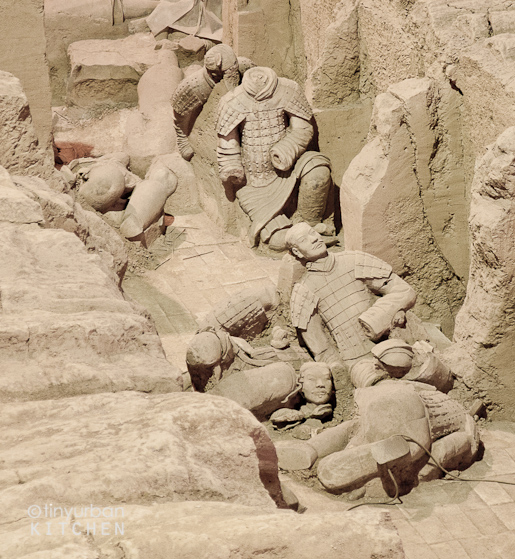
Excavation has been going on for about 30 years, although at times the Chinese government decided to stop digging because exposure to the air was causing these soldiers to lose their beautiful lacquered colors. Even though the warriors were brightly colored when they first emerged, exposure to the air caused the colors to disappear within 7-10 days.
Scientists are still trying to figure that out. They've decided to keep some tombs covered until they can perfect the technology.
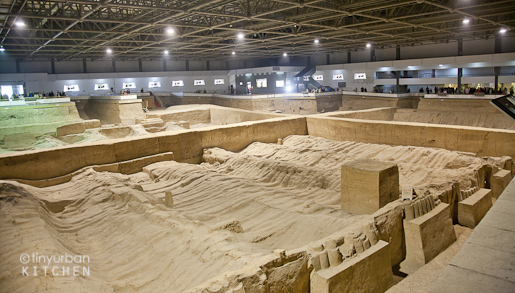
Rows and rows of unearthed soldiers, still buried and preserved
Three pits of the tomb have now been at least partially unearthed, and thousands of soldiers have been slowly pieced back together.
The variety of soldiers and animals is mind-numbing.
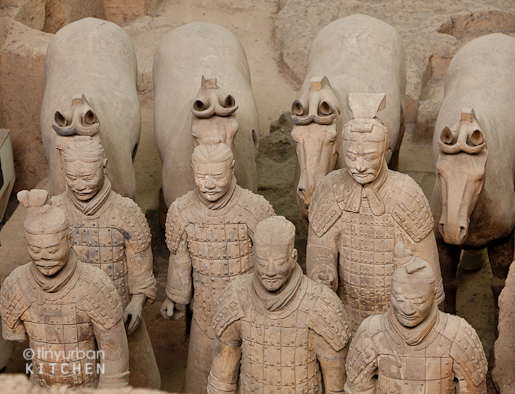
No two faces are exactly the same.
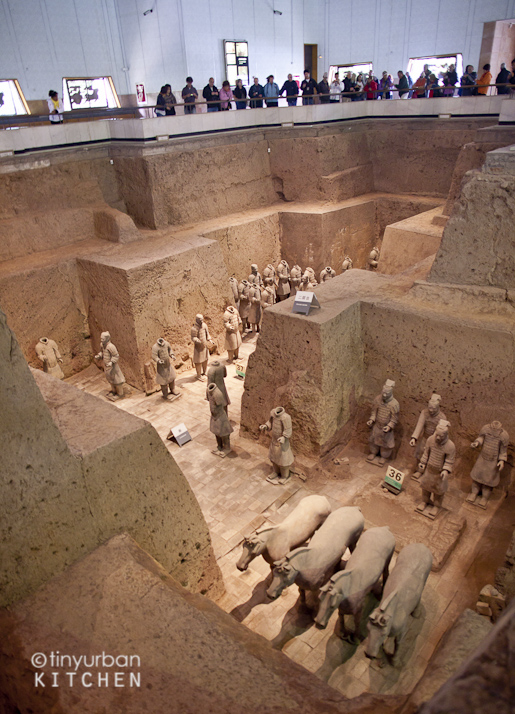
Pictured about is the "Control Room" where higher level generals met.
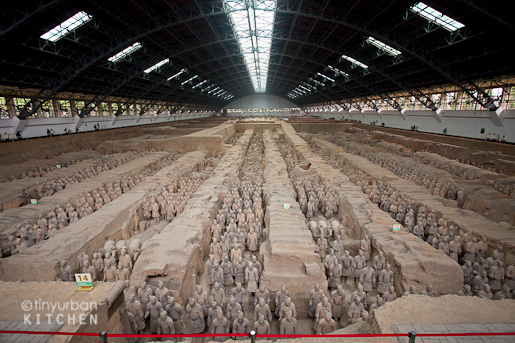
This massive room (Pit No. 1) is the most impressive of all. Rows of soldiers seem to go on forever. There are estimated to be around 8000 soldiers total, many of whom are still buried.
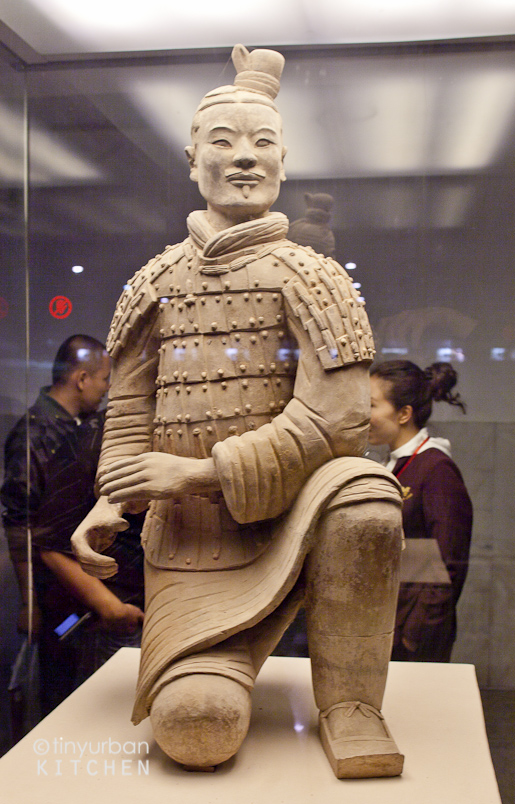
This guy is called the Lucky One because, to date, he is the only one that was found completely intact. He has become the symbol of the region.
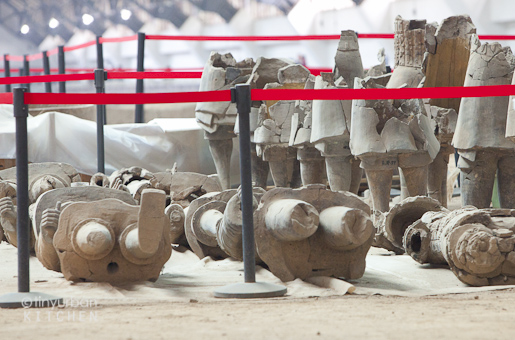
So much work still to do . .
Xi'An Dining
Visting the Terra Cotta Warriors in Xi'An is a breathtaking experience and totally worth the extra two-hour flight from Beijing. We traveled to Xi'An solely to see this incredible life-sized clay army. We stayed for hours, just soaking in the immensity of the work. No photo can truly capture the sheer massiveness and wonder of seeing the warriors in person.
The Shaanxi region of China (which is where Xi'an is located) has a few well known dishes. Their homemade noodles, especially their hand-pulled noodles, are well known. One deliciously simple dish we tried was the Chili Oil Noodles (油泼面 you puo mian). Essentially, they give you these REALLY WIDE noodles that you hand mix with their addictively spicy sauce.
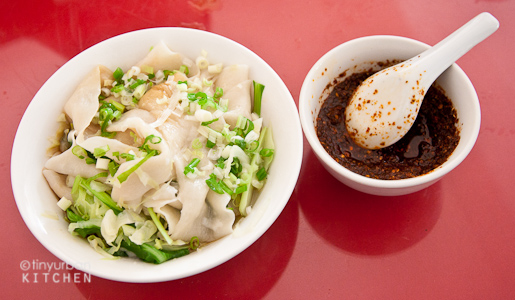
It's oily, chewy, and oh-so-satisfying after an entire morning and afternoon hanging out with the terra cotta warriors.
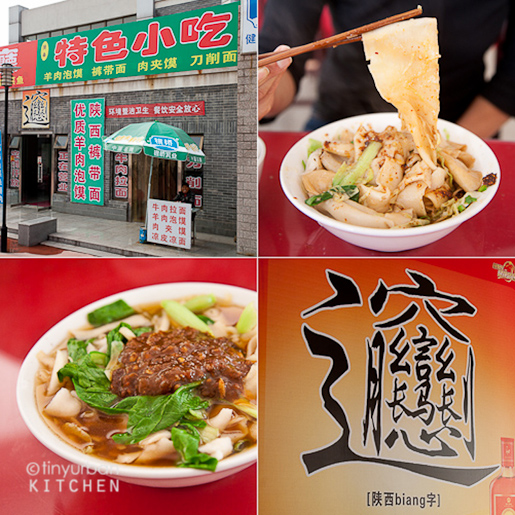
The wide noodles are called "biang biang" noodles (see ridiculously complicated character shown above).
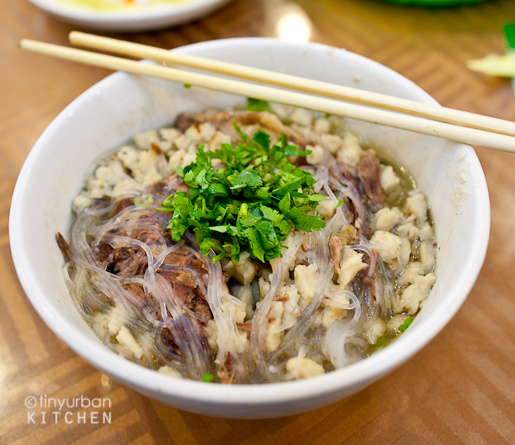
Another very classic dish is the mutton stew (羊肉泡沫 yang rou pao muo). The waiter brings out a dry piece of wheat flour bread (almost like a really thick cracker) which you break up into pieces. He then takes the pieces back into the kitchen, to which he adds the rest of the stew.

The stew was hearty and delicious (as long as you like the taste of lamb). I liked the texture of the crackers, which was slightly chewy and quite dense. Pickled garlic also seems to be quite popular.
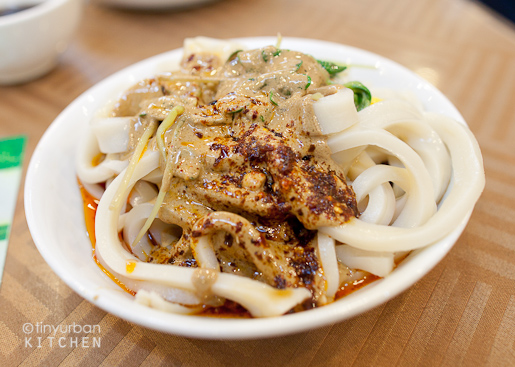
Unfortunately, I did not have a chance to try the third type of well-known Shaanxi dish, the dumpling banquet. It would have been fun to try all the various colorful dumplings that are characteristic of these banquets. Some day . . .
Hoping to return . . .
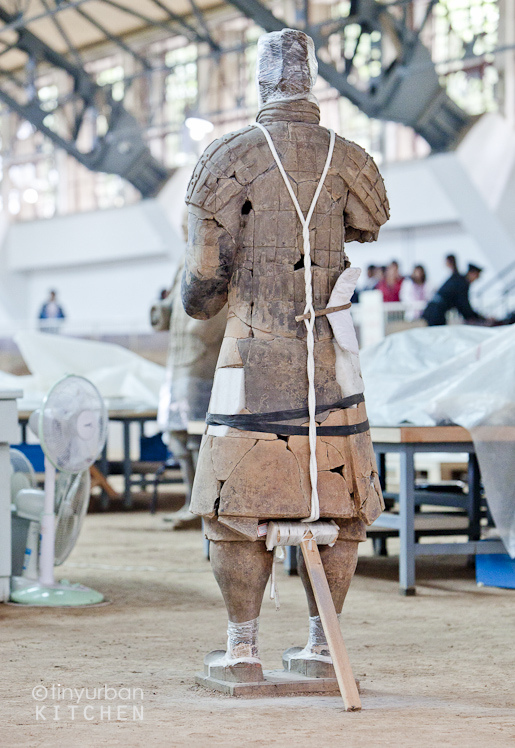
Xi'an holds what many consider to be the eighth wonder of the world. The site is continually changing as the workers clean up and restore more and more soldiers. It will be so cool to return once they have perfected the technique of preserving the colors on the soldiers.
I would highly recommend making a stop at Xi'an, both for the fascinating history and also for the food. Xi'an was the first capital of China, and therefore has a ton of older Chinese history embedded within those old walls (yes, the inner city is still completely walled! It's really cool!).
Looking forward to the day I return. Until then, I guess I can always pull my own noodles. 😉
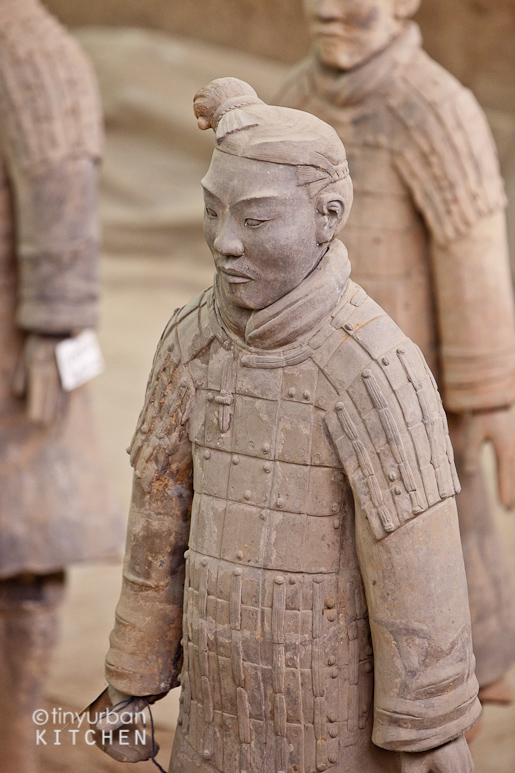
This is part 14 of the China Series detailing my recent trip to Beijing, Xian, and Shanghai.
part 11: Crystal Jade (Dim Sum)
part 12: Jiu Men Xiao Chi (Nine Gates Snack Street) - the best Street Snacks in Beijing
part 13: Noodle Loft {Mian Ku}
All Rights Reserved


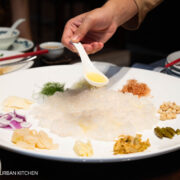
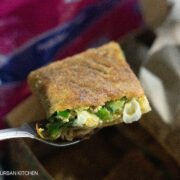
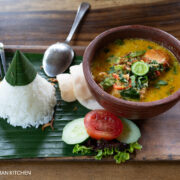
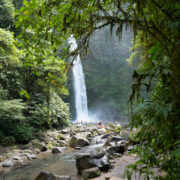
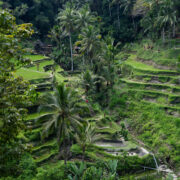
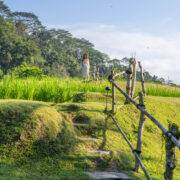

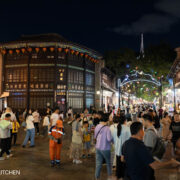
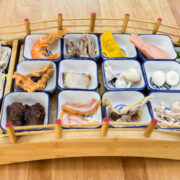
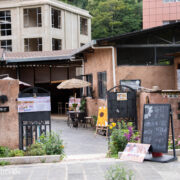
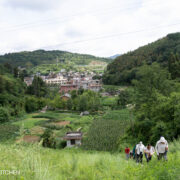
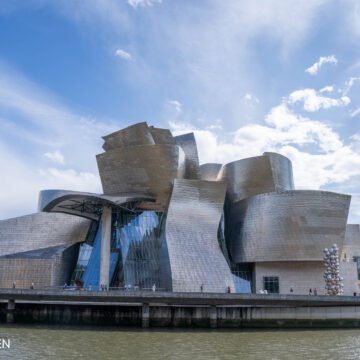
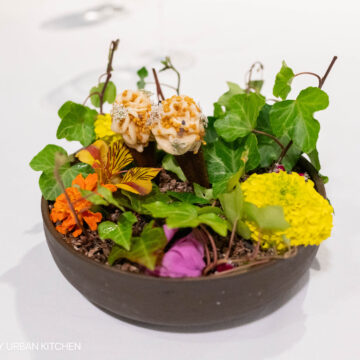
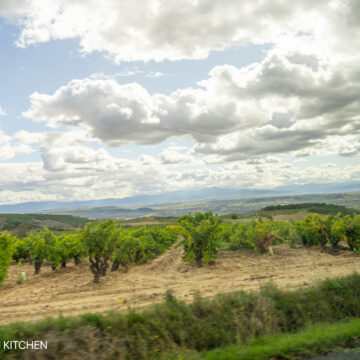
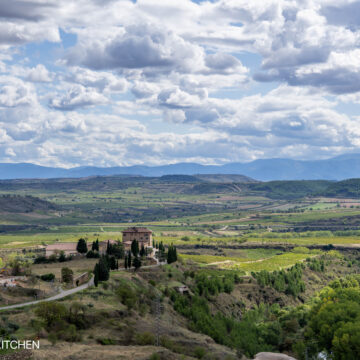
[…] Xi’an. At left is the replica from Epcot; at right is a photo of the real soldiers from my visit to Xi’an back in 2010. We didn’t eat any of the food in China this time around, though we did dine at the Nine […]